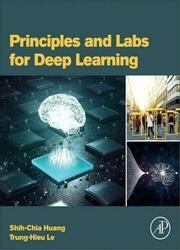 Название: Principles and Labs for Deep Learning
Название: Principles and Labs for Deep LearningАвтор: Shih-Chia Huang, Trung-Hieu Le
Издательство: Academic Press, Elsevier
Год: 2021
Страниц: 353
Язык: английский
Формат: pdf (true)
Размер: 24.3 MB
Principles and Labs for Deep Learning provides the knowledge and techniques needed to help readers design and develop deep learning models. Deep Learning techniques are introduced through theory, comprehensively illustrated, explained through the TensorFlow source code examples, and analyzed through the visualization of results. The structured methods and labs provided by Dr. Huang and Dr. Le enable readers to become proficient in TensorFlow to build deep Convolutional Neural Networks (CNNs) through custom APIs, high-level Keras APIs, Keras Applications, and TensorFlow Hub. Each chapter has one corresponding Lab with step-by-step instruction to help the reader practice and accomplish a specific learning outcome.
Deep Learning has been successfully applied in diverse fields such as computer vision, audio processing, robotics, natural language processing, bioinformatics and chemistry. Because of the huge scope of knowledge in Deep Learning, a lot of time is required to understand and deploy useful, working applications, hence the importance of this new resource. Both theory lessons and experiments are included in each chapter to introduce the techniques and provide source code examples to practice using them. All Labs for this book are placed on GitHub to facilitate the download. The book is written based on the assumption that the reader knows basic Python for programming and basic Machine Learning.
The authors of this book deeply understand the importance and development of the field of AI. As such, Principles and Labs for Deep Learning is meant to inspire and help more students, engineers, and researchers to quickly enter the field of AI and begin applying deep learning in their research projects, products, and platforms. This book includes 12 chapters with content that balances theory and practice:
1: “Introduction to TensorFlow 2”
2: “Neural networks”
3: “Binary classification problem”
4: “Multi-category classification problem”
5: “Training neural network”
6: “Advanced TensorFlow”
7: “Advanced TensorBoard”
8: “Convolutional neural network architectures”
9: “Transfer learning”
10: “Variational auto-encoder”
11: “Generative adversarial network”
12: “Object detection”
Скачать Principles and Labs for Deep Learning